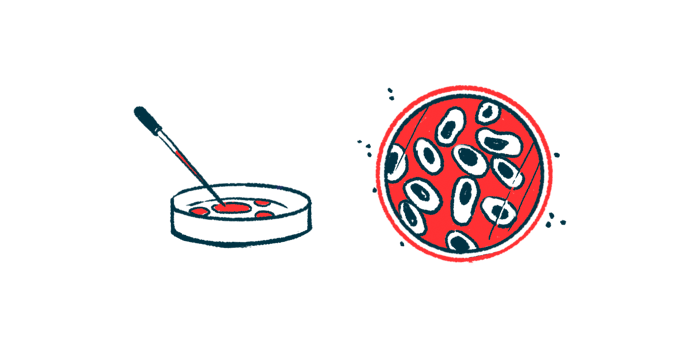Inhaled TAVT-135 shows promise as treatment for all CF types
Therapy helped to normalize mucus production in cell model

TAVT-135, an inhaled treatment candidate being developed for people with cystic fibrosis (CF) regardless of their underlying mutation type, was found to help normalize mucus production in a cell model of the disease.
According to researchers from Tavanta Therapeutics, the treatment’s developer, the findings of their in vitro studies — with tests done in a lab dish — “may suggest a mucociliary clearance effect [self-clearing of the airways] in vivo,” or in living organisms.
Scientists from Tavanta presented the new preclinical data this month at scientific conferences held by the American Thoracic Society (ATS) and the European Cystic Fibrosis Foundation (ECFS).
“As demonstrated by the data reported at ATS and ECFS, TAVT-135 may represent an effective treatment option for people with CF, regardless of CFTR mutation status,” Lynne Powell, Tavanta’s CEO, said in a company press release. “We are pleased with the progress that we are making with TAVT-135 and believe this asset provides a strong foundation upon which to build out Tavanta’s respiratory franchise.”
CF treatment designed for patients regardless of underlying mutation
CF is caused by mutations in the gene that provides instructions for making the protein CFTR. This protein normally sits on the surface of certain cells where it acts like a channel, allowing chloride ions — a type of salt molecule — to move in and out of the cells. In CF, this protein either does not function properly or is not produced at all.
The movement of water and salts in and out of cells is necessary to produce mucus, the slimy substance used to lubricate and protect the body’s membranes. Lack of functional CFTR protein leads to the production of abnormally thick, sticky mucus. The thick mucus builds up in the lungs and other organs, ultimately causing most symptoms of CF.
A recently developed class of therapies called CFTR modulators can help normalize mucus production by boosting the functionality of the CFTR protein for people with specific disease-causing mutations. However, many CF patients are not eligible for modulator therapy due to the particular mutation that causes their disease.
“While many people with CF benefit from mutation-specific therapies that can restore function of the defective cystic fibrosis transmembrane conductance regulator (CFTR) protein, some people do not respond to these modulators due to ineligible mutations, side effects or lack of access,” Powell said.
TAVT-135 is an inhaled therapy designed to normalize mucus production by acting as a functional replacement for the CFTR protein. The therapy is a combination of a peptide — a string of amino acisd, the building blocks of proteins — with a small molecule that works to allow chloride transport across the cell membrane.
Because it doesn’t need to interact with the existing CFTR protein in a patient’s cells, TAVT-135’s effects are not expected to be affected by mutation type.
[The] data support that TAVT-135 has the potential to address significant unmet needs in patients with CF, including those who are ineligible for, or not responding to, CFTR modulators.
In preclinical studies, TAVT-135 was first tested in oocytes, or developing eggs, from Xenopus laevis, the African clawed frog. These large cells are easy to manipulate and study in detail on a single-cell level in laboratory experiments. Results showed that TAVT-135 triggered the movement of chloride through the cell membrane as designed.
The experimental therapy also was tested in human bronchial epithelial cells — the cells that line the inside of the airways — harboring CF-causing mutations. These results indicated that treatment with TAVT-135 also showed potential for a mucus-hydrating effect by increasing the height of the airway surface liquid, a thin layer of fluid covering the surface of the airway, and of the periciliary layer, which contacts airway surface cells.
“These data support that TAVT-135 has the potential to address significant unmet needs in patients with CF, including those who are ineligible for, or not responding to, CFTR modulators,” scientists concluded in the abstract of the presentation at the ECFS meeting.








